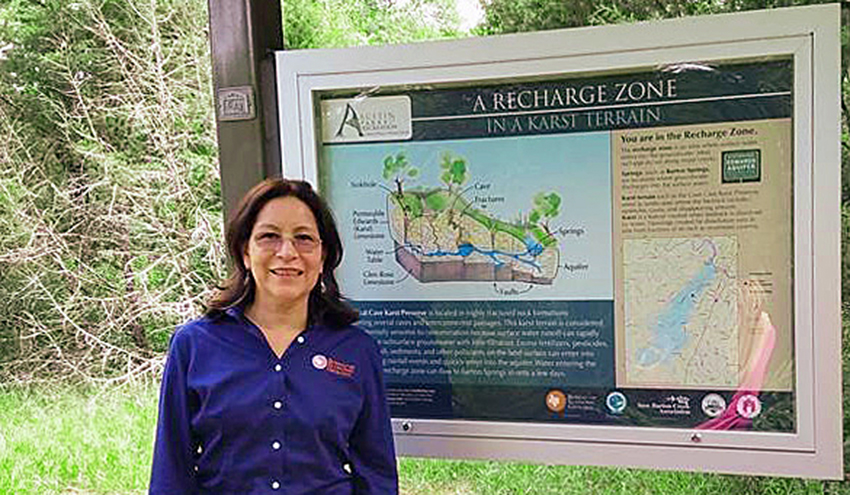So much goes on above the earth’s surface, that it’s easy for people to overlook what’s under their feet. The Texas GeoSign Project, launched last June, places signs to educate the public about this hidden world.
The project, a partnership between UT’s Bureau of Economic Geology, the Texas Department of Transportation and others, posts geologic information signs throughout the state. Most are placed at transportation department safety rest areas. These signs contain important facts about the geology of the area such as terrain, endangered species listings and water systems in order to expand the public’s understanding of local geology.
Amanda Ross, divisions manager at the Austin Parks and Recreation Department and partner with the Texas GeoSign project, said the goal of the signs is mainly to educate and interest the public.
“Geology is a complex subject, so the challenge is to make it understandable and relatable so that the topic is not so overwhelming and so that it sparks people’s imagination about all that has happened in a place that they now occupy,” Ross said. “This kind of project gives a voice to the landscape. These signs are ambassadors along the trail that greet each visitor.”
In April, project leader Linda McCall unveiled a new Texas GeoSign in South Austin at the Goat Cave Karst Nature Preserve. The eight-acre preserve contains numerous water-formed caves, sinkholes and smaller openings. The five new signs include information about how the porous terrain of the areas makes them more susceptible to pollution, and explains briefly how the landscape formed and how the water systems interact.
Currently, signs are posted in safety rest areas in Eastland and La Salle counties. McCall said while the community response has been positive, it will take more work to build awareness of earth’s geological features.
“In my experience, I find that the public is definitely interested in the geologic setting and natural resources of their surroundings,” she said. “However, public understanding about the geology and geologic history of their surroundings is often quite limited. This is why we have a mission to help educate our citizens about Texas geology.”
McCall said the project hopes to post at least two signs a year, with help from the Texas Department of Transportation and other partners such as the Save Barton Creek Association, and the Austin Parks Foundation.
“We are also working with (these) societies on future Texas GeoSigns,” McCall said. “We greatly value partner contributions and look to expand these networks statewide.”
The bureau is also working to upload the information and images of the signs on a website, allowing anyone to learn about Texas geology. Ross said the project will not only help educate people now, but will provide for a safer future.
“Geologic scale can make one feel insignificant, so the goal is to create an understanding that our feet inhabit an area today that is connected to a fascinating past and that the future is just as important,” she said. “It is our job to make sure that the people feel connected to the past so that they want to help protect it for the future.”















